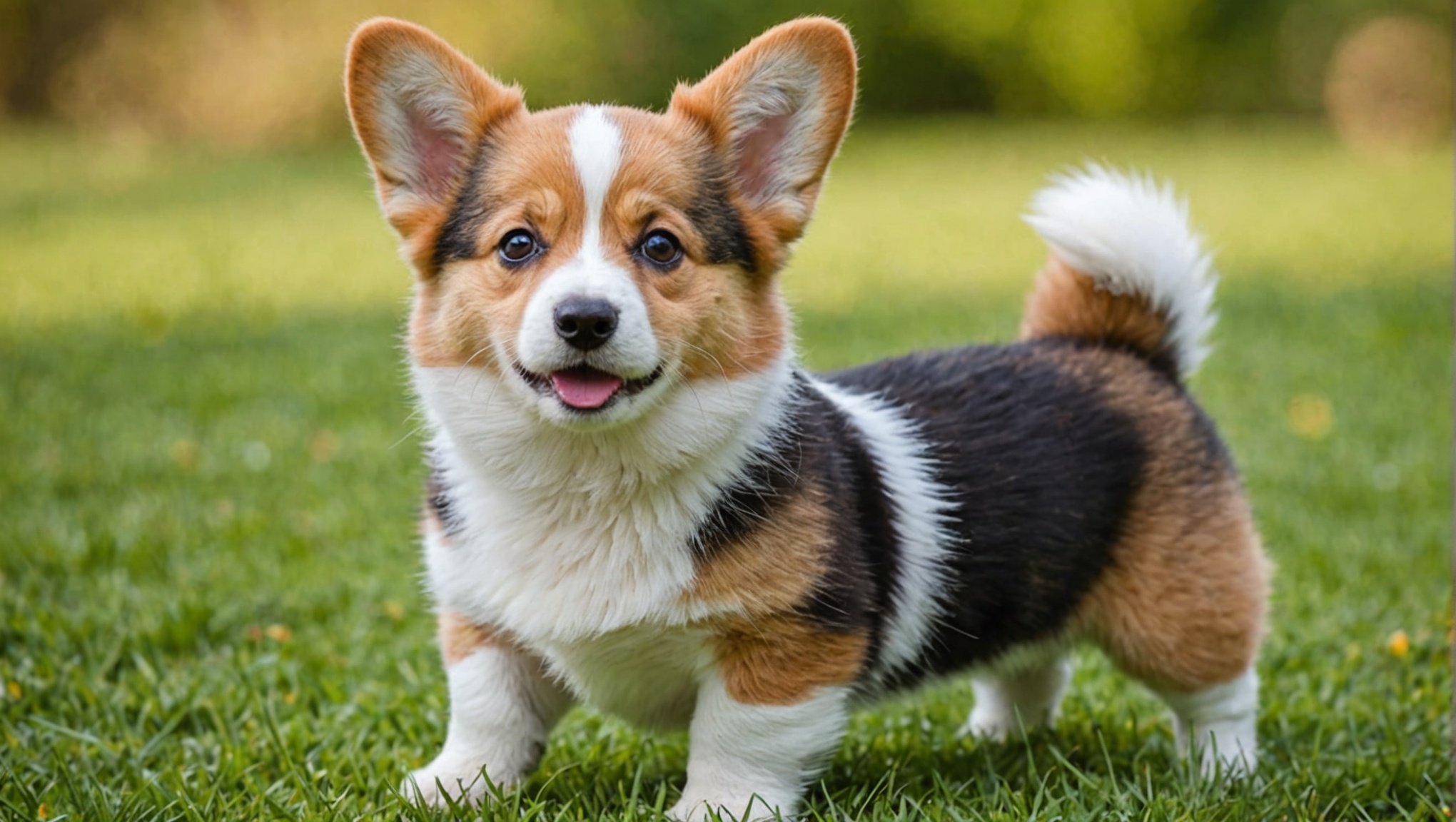Introducing a new kitten into your home can be exciting but challenging, especially when your corgi has strong herding instincts. Ensuring a smooth transition for both pets requires thoughtful strategies. Corgis may view kittens as small creatures to herd rather than companions, which can lead to stress for everyone involved. This guide offers expert tips to create a harmonious relationship between your corgi and your new feline friend, ensuring their safety and comfort while strengthening your bond with both. Get ready to foster a peaceful coexistence for your furry family members!
Understanding the Dynamics of Introducing a New Kitten
Introducing a new kitten into a household with a Corgi involves understanding the unique dynamics at play. Corgis are known for their herding instincts, which can influence their behaviour around smaller animals. These instincts might manifest as chasing or nipping, behaviours that are instinctual rather than aggressive. It’s crucial to recognise these tendencies to manage interactions effectively.
A lire aussi : Spotting and Reporting Illegal Wildlife Trade in the UK: A Comprehensive Guide
On the other hand, kittens have their own set of behaviours and needs. They are naturally curious and may be unaware of the boundaries needed when interacting with dogs. Understanding kitten behaviour is essential to ensure a harmonious introduction. Kittens require a safe space where they can retreat, away from the Corgi’s herding tendencies.
Before introducing a new pet, consider the dynamics of your home environment. Key factors include the Corgi’s temperament, the kitten’s age and personality, and the space available for each pet to feel secure. Gradual introductions, where the kitten and Corgi can observe each other from a distance, can help ease the transition. This strategy respects the needs and behaviours of both animals, fostering a peaceful coexistence.
Lire également : Creating a Secure and Enriching Outdoor Space for Cats with Feline Leukemia Virus (FeLV)
Preparing Your Home for the New Kitten
Creating a safe space for your new kitten is crucial for a smooth transition into your home. This area should be quiet and secure, allowing the kitten to explore without feeling threatened. Use a room where the kitten can become familiar with its surroundings, away from the Corgi’s immediate presence. This space should include essentials like food, water, litter box, and toys.
It’s equally important to ensure the Corgi’s area is secure and off-limits to the kitten initially. This helps maintain the Corgi’s sense of territory and reduces stress for both pets. Use gates or closed doors to separate the two animals, allowing controlled interactions over time.
Introducing the shared space gradually is a key step. Start by allowing the kitten and Corgi to become accustomed to each other’s scents. Swap bedding or use a soft cloth to gently rub each pet, then place it in the other’s area. This helps them recognise each other’s presence without direct contact.
Additionally, expose the kitten to household sounds slowly. This includes the Corgi’s barking, which can be startling at first. By managing these introductions carefully, you create a pet-friendly environment that fosters a harmonious relationship.
The Introduction Process: Steps to Follow
Introducing a new kitten to a Corgi requires a well-planned pet introduction process. The key is gradual acclimation, allowing both animals to adjust at their own pace. Start by keeping them in separate spaces and swapping their scents. This can be achieved by exchanging bedding or toys, helping each pet become familiar with the other’s presence.
Techniques for Initial Introductions
During the first meetings, ensure that both pets are calm. Use physical barriers like gates to create a safe environment. This allows visual contact without direct interaction, reducing potential stress. Gradually increase their time together as they become more comfortable.
Monitoring Body Language
Pay close attention to the body language of both the kitten and the Corgi. Signs of stress or discomfort, such as growling or hissing, should be addressed immediately. Positive signals, like relaxed postures and gentle tail wagging, indicate a successful introduction.
Using Barriers and Gates for Safety
Barriers and gates are essential tools in the introduction process. They provide a controlled environment where pets can safely explore each other’s presence. Over time, as trust builds, these barriers can be removed, allowing for more direct interaction. This structured approach ensures a smoother transition to a harmonious household.
Behavioural Considerations for the Corgi
Understanding Corgi training is essential when introducing a kitten into your home. Corgis, known for their strong herding behaviours, might instinctively chase or nip at smaller animals. Recognising these instincts is the first step in managing them effectively.
Recognising and Managing Herding Instincts
Corgis are naturally inclined to herd, a behaviour that can manifest in various ways around other pets. It’s crucial to observe your Corgi’s interactions and identify signs of herding. This might include circling, nudging, or attempting to guide the kitten. Awareness allows for timely intervention.
Training Techniques to Redirect Unwanted Behaviours
Redirecting unwanted behaviours through training techniques is vital. Use commands to divert your Corgi’s attention away from the kitten. Consistent training sessions focusing on commands like “sit” or “stay” can help manage herding tendencies. Offering a toy as a distraction can also be effective.
Importance of Positive Reinforcement
Positive reinforcement plays a significant role in pet behaviour management. Reward your Corgi for displaying calm and gentle behaviours around the kitten. Treats, praise, and affection can reinforce desired actions, helping your Corgi associate the kitten with positive experiences. This approach fosters a harmonious relationship between your pets.
Behavioural Considerations for the Kitten
Understanding kitten behaviour is crucial when introducing them to a new environment, especially with other pets like a Corgi. Kittens are naturally curious and playful, driven by their feline instincts to explore and interact with their surroundings. Recognising these instincts helps in managing their interactions with other animals.
Understanding Natural Instincts
Kittens have a strong prey drive and may engage in behaviours such as pouncing or stalking. These actions are part of their natural development and not an indication of aggression. Providing toys that mimic prey can help satisfy these instincts and keep kittens engaged.
Socializing the Kitten with Other Pets
Socialization is key to ensuring a harmonious household. Gradually introducing the kitten to the Corgi in a controlled manner allows them to become familiar with each other. Positive interactions, supervised playtimes, and rewarding calm behaviour can foster a friendly relationship between the two.
Ensuring Safety and Security
Creating a secure environment is essential for the kitten’s well-being. Ensure they have access to a safe retreat, such as a cat tree or a quiet room, where they can escape if they feel overwhelmed. This space helps them feel secure and reduces stress during the introduction process.
Strategies for a Smooth Transition
In a multi-pet household, effective transition strategies are crucial for a harmonious environment. Establishing routines for both your Corgi and kitten is a foundational step. Consistent feeding, play, and rest times help both pets feel secure and understand what to expect daily.
Gradual increase in interactions is key. Begin by allowing them to observe each other from a distance, gradually decreasing the space as they become more comfortable. Short, supervised sessions can help them acclimate without overwhelming either pet. It’s important to monitor their body language and adjust the pace according to their comfort levels.
Patience is paramount during this adjustment period. Both animals need time to adapt to each other’s presence and establish their own boundaries within the household. Avoid rushing the process, as this can lead to stress and potential conflicts. Instead, encourage positive interactions with treats and praise, reinforcing calm and friendly behaviour.
Incorporating these integration tips ensures a smoother transition. Remember, every pet is unique, and their adjustment timelines may vary. By respecting their individual needs and fostering a supportive environment, you pave the way for a peaceful coexistence.
Expert Insights and Real-Life Examples
Introducing a new pet, like a kitten, into a household with a Corgi can be complex. Veterinarian advice is invaluable in navigating this process. Experts recommend gradual introductions, ensuring each animal has a safe space. Veterinarians often highlight the importance of understanding each pet’s body language to prevent misunderstandings and stress.
Real-life pet case studies offer practical insights. For example, one case involved a Corgi with strong herding instincts and a timid kitten. The owners followed expert tips by using scent-swapping techniques and supervised interactions. Over time, the pets developed a mutual respect, demonstrating the effectiveness of a structured approach.
Expert tips also caution against common pitfalls. Rushing the introduction process or neglecting either pet’s emotional needs can lead to anxiety or aggression. It’s crucial to maintain a balanced environment, allowing both pets to explore at their own pace.
By combining veterinarian advice with lessons from real-life experiences, pet owners can facilitate a smoother integration. This approach not only addresses potential challenges but also fosters a harmonious relationship between the Corgi and the kitten, ensuring a peaceful coexistence in the household.
Maintaining Harmony in a Multi-Pet Household
Creating and maintaining multi-pet harmony requires ongoing management and attention to behavioural dynamics. A successful strategy for long-term coexistence involves regular monitoring of interactions between pets, ensuring each feels secure and respected.
Strategies for Long-Term Coexistence
To foster harmony, establish routines that cater to the individual needs of each pet. Consistent feeding times and designated play areas can reduce competition and stress. As pets grow and their behaviours change, adapt these routines to suit their evolving needs.
Regular Monitoring of Interactions
Regularly observe your pets during interactions to identify any emerging behavioural issues. Look for signs of stress or discomfort and intervene promptly. Positive interactions should be encouraged and reinforced with treats or praise, promoting a peaceful environment.
Adjusting Strategies as Pets Grow and Change
As your pets mature, their social dynamics may shift. Be prepared to adjust your strategies to accommodate these changes. This might involve redefining spaces within the home or introducing new training techniques to address any behavioural shifts.
By prioritising ongoing management and behavioural monitoring, you can ensure a harmonious multi-pet household. This proactive approach not only maintains peace but also strengthens the bond between your pets over time.
















